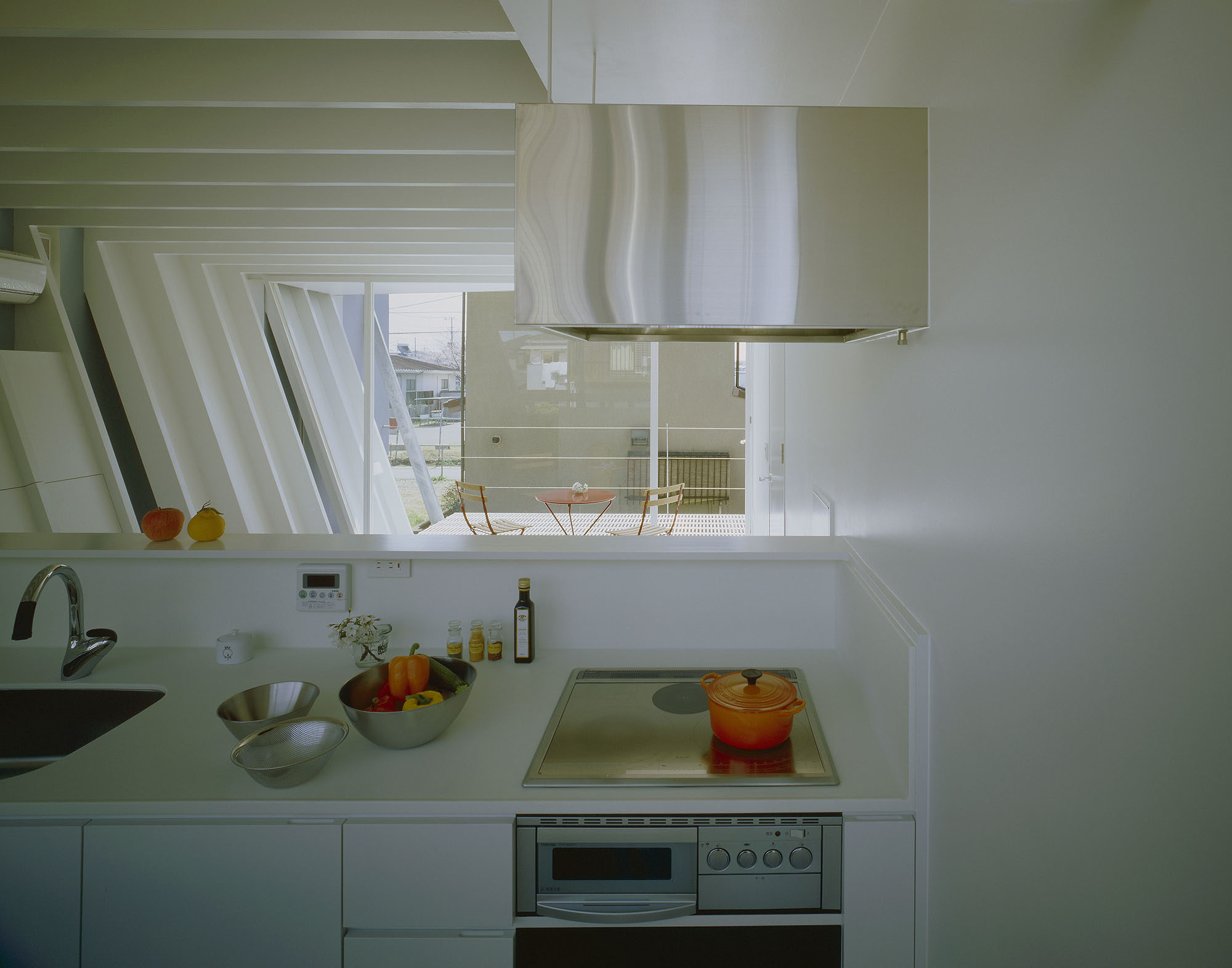
Fold House
The design of this house uses “stacking”, “wrapping” and “shifting” in three dimensions. Cell Space consistently design starting from the composition of the entire building to the fine details.
Old Japanese houses are composed of multiple overlapping sliding doors that can close down or open out space. The Japanese court ceremonial kimono consists of 12 wrapped cloths that form overlapping layers. The design explores the use of these themes and the Japanese skill in creating harmony from the act of stacking and changing shape.
The main structure of the house consists of two sets of flat roof supported on East and West walls; the smaller sits within the larger set with the smaller offset to the North. Consequently a very large eaves has been created to the south, which keeps the summer sun out when the sun is high in the sky, but allows the low winter suns rays into the building through large windows to warm the house in the cold winter. A viewing platform and balcony has been created to the north by this arrangement. There is a gap between the two roofs and air can pass through this gap in summer to cool the building. In order to resist horizontal forces generated by earthquakes the inner external wall is oblique to the outer external wall, forming a structurally strong triangle shape that acts as a brace.
Gallery
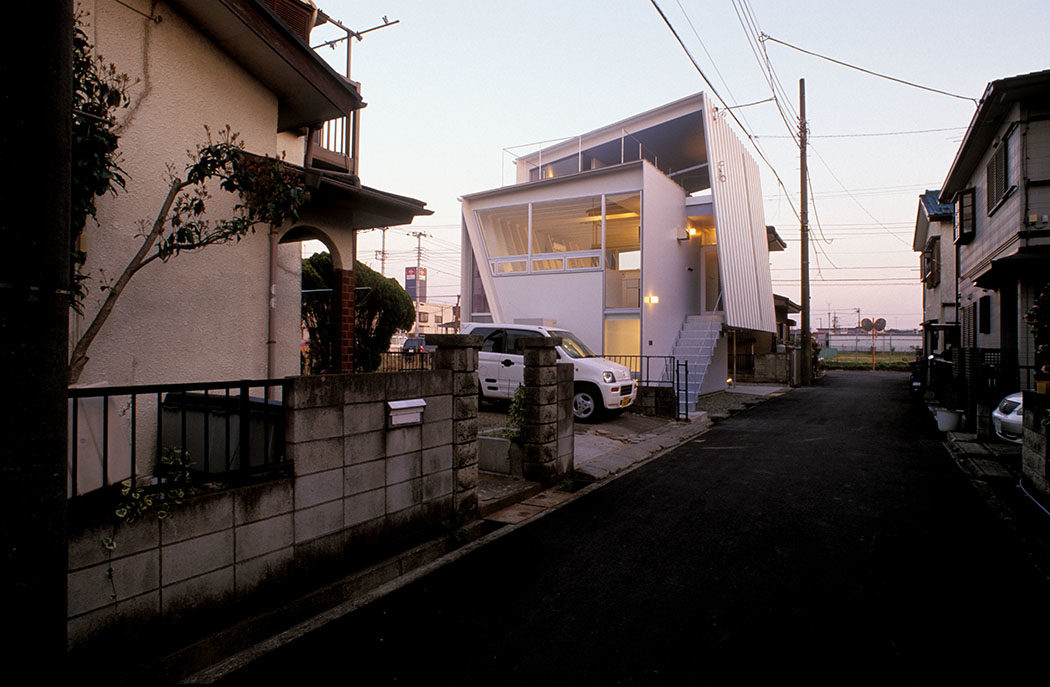
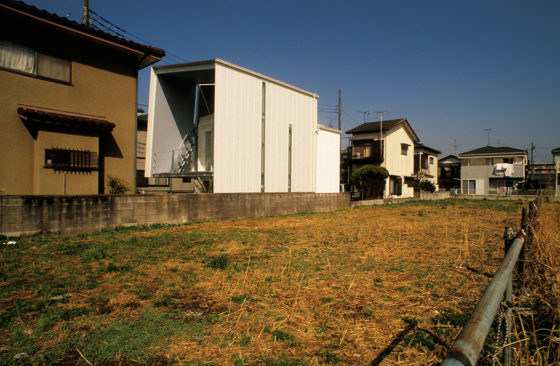
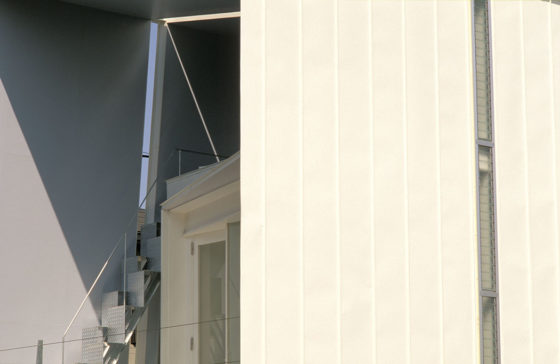
The outer walls are covered with white to reduce the heat load from sunshine.
The east side and the roof are provided with a slit for indoor ventilation to further reduce heat from the sunshine.
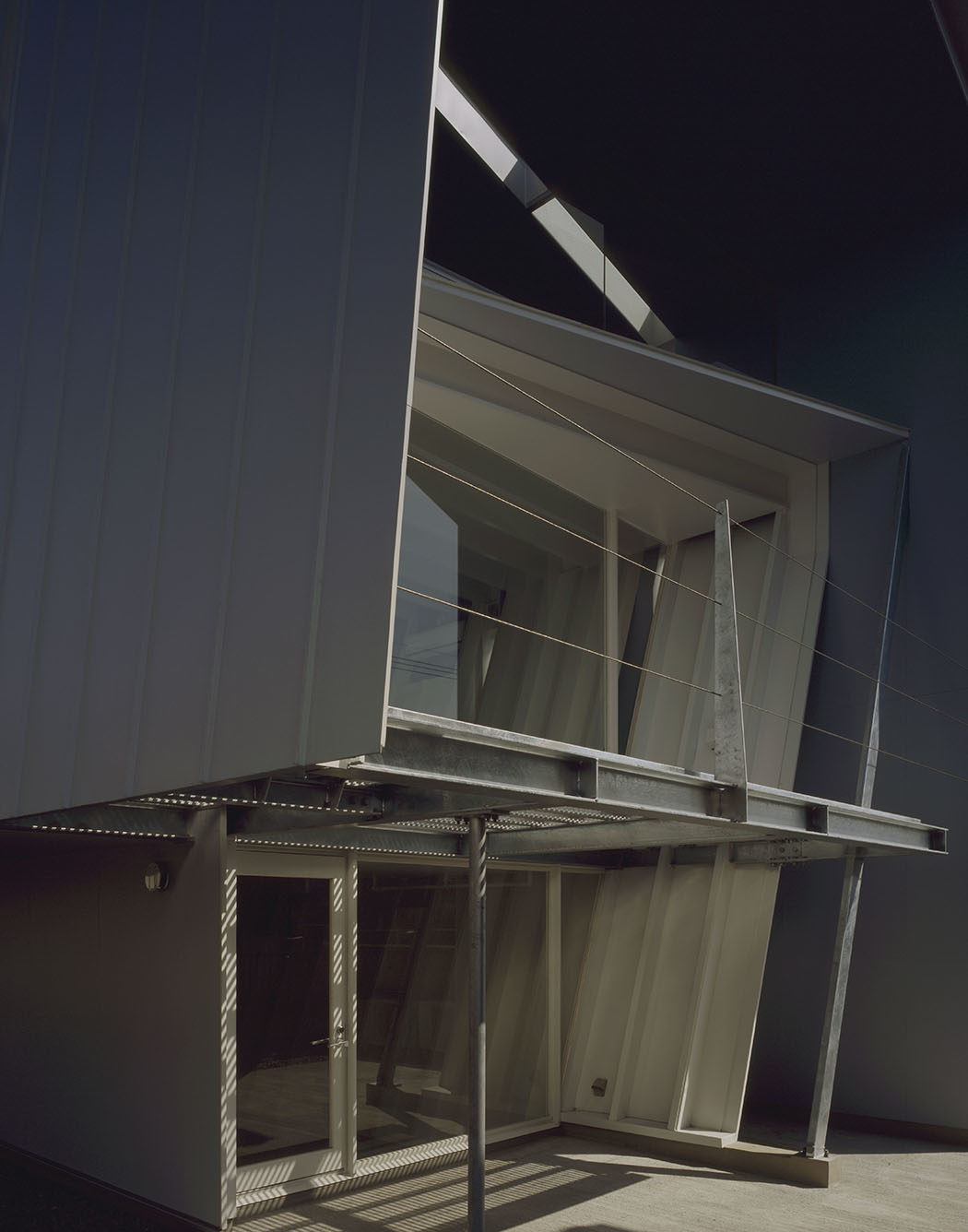
Shading from the perforated panel on the terrace reduces direct sunlight during the day, allowing only moderate light into the room.
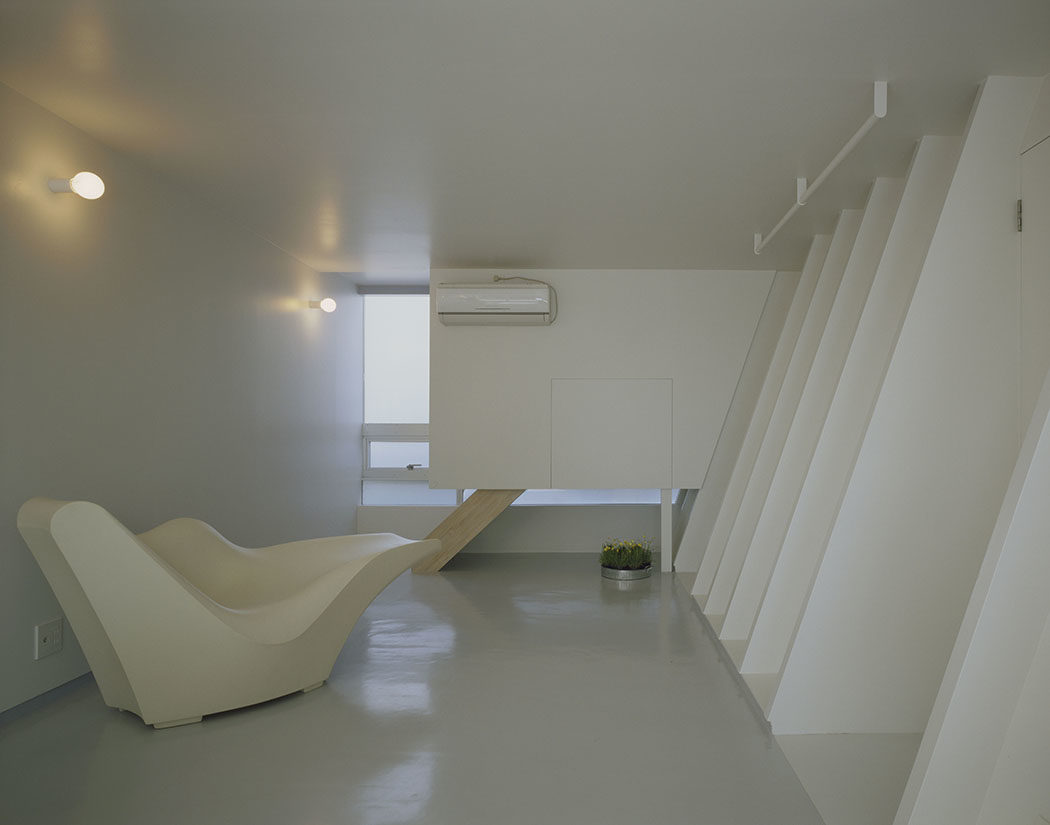
During the day, both the soft light from the glass surface film on the north side and the light reflected from the south outside floor illuminate the room brightly.
All the household facilities requiring water are located together to minimize costs.
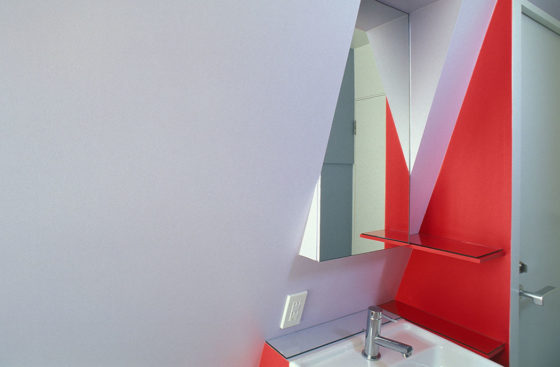
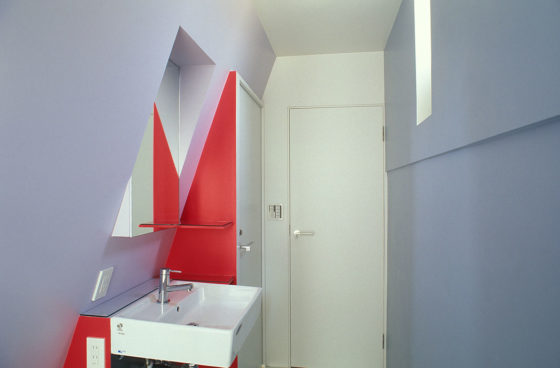
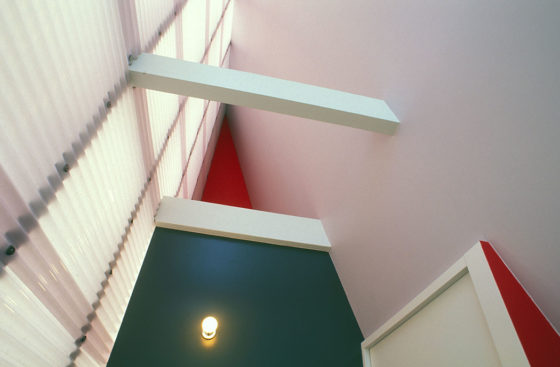
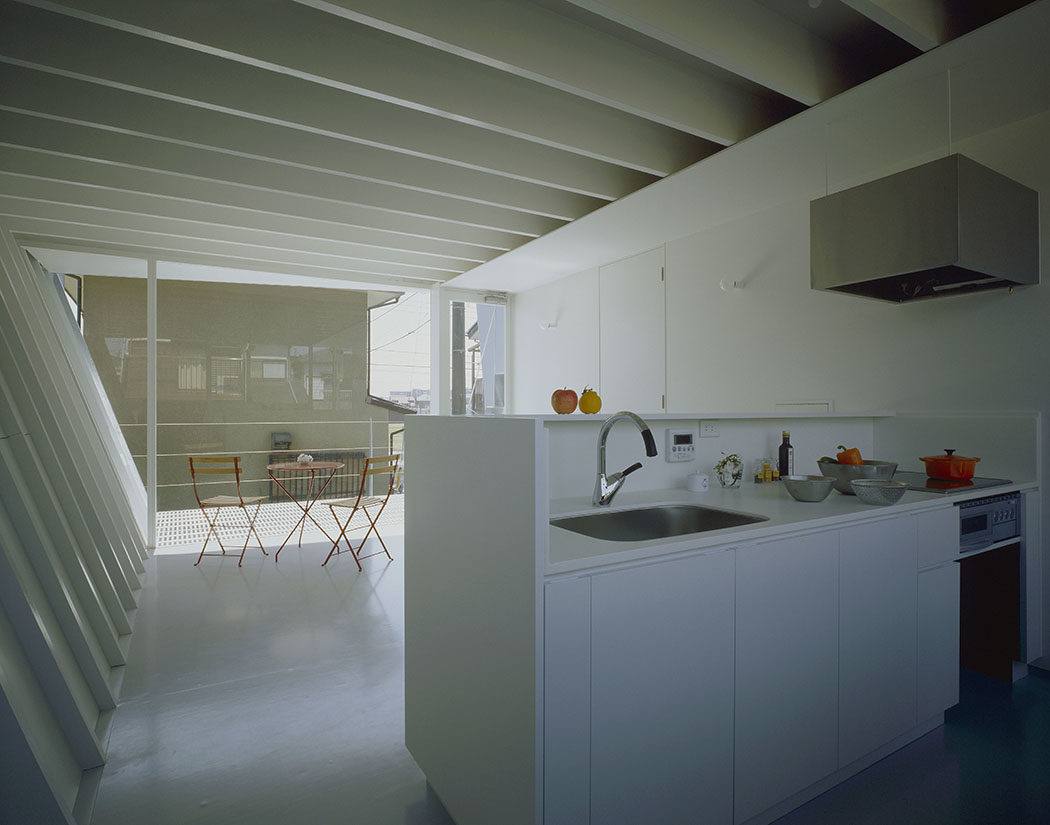
You can talk with others while cooking at the kitchen counter. As the house is all-electric, the installation of the kitchen is simplified and the kitchen surroundings fit neatly into the space.
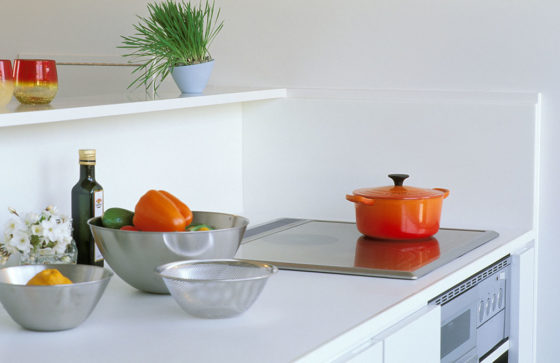
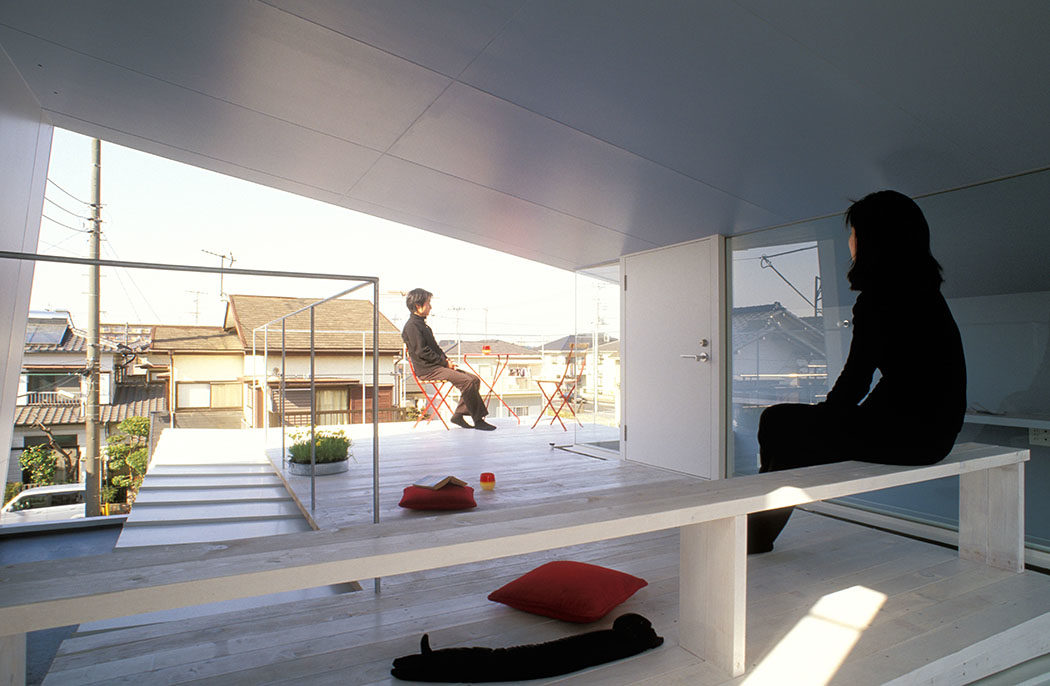
The wind passing between the double roofs allows the heat of summer to escape and the shading of the semi-outdoor space by a roof surface wider than the loft have a dual cooling effect.
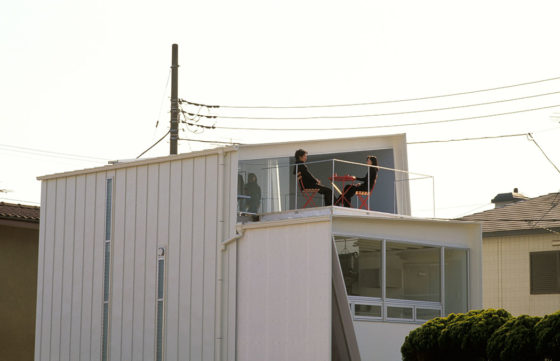
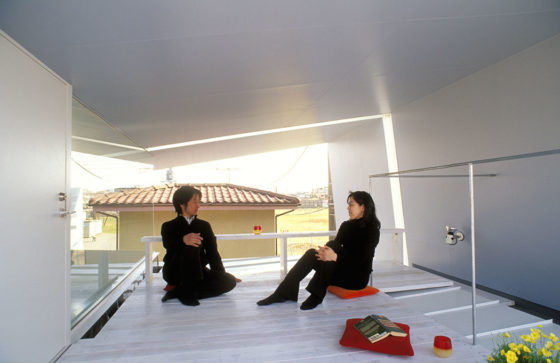
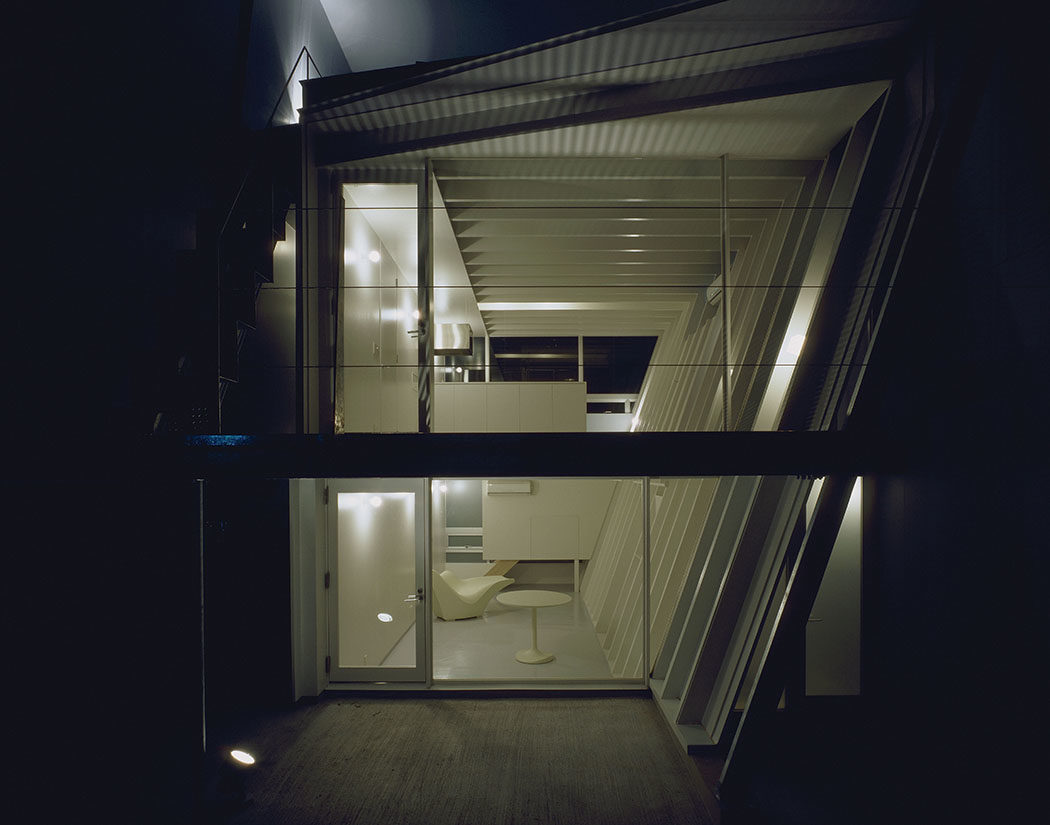
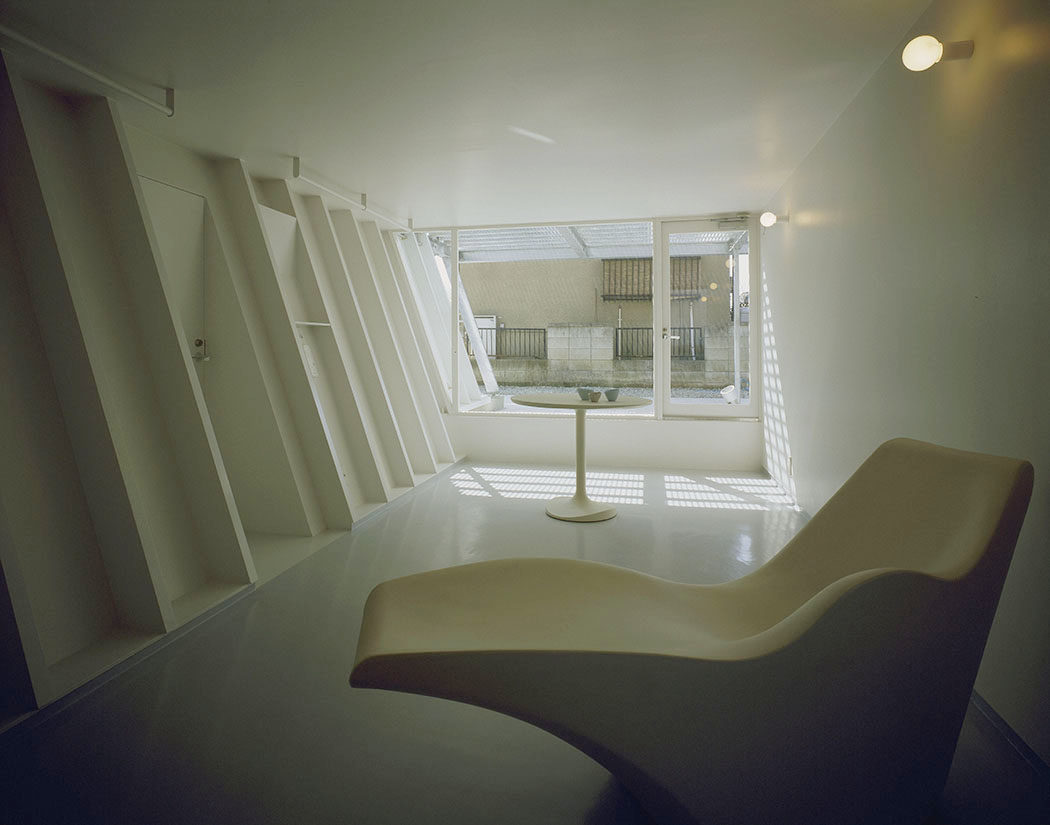
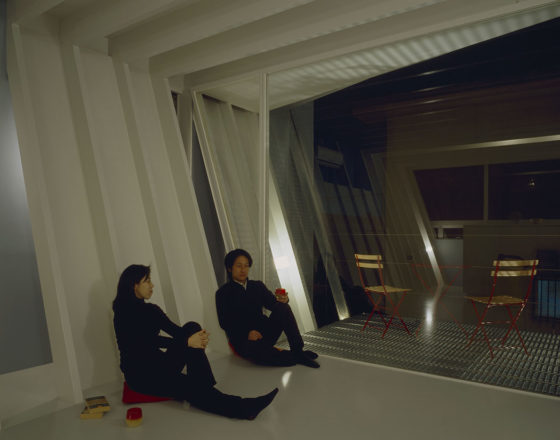
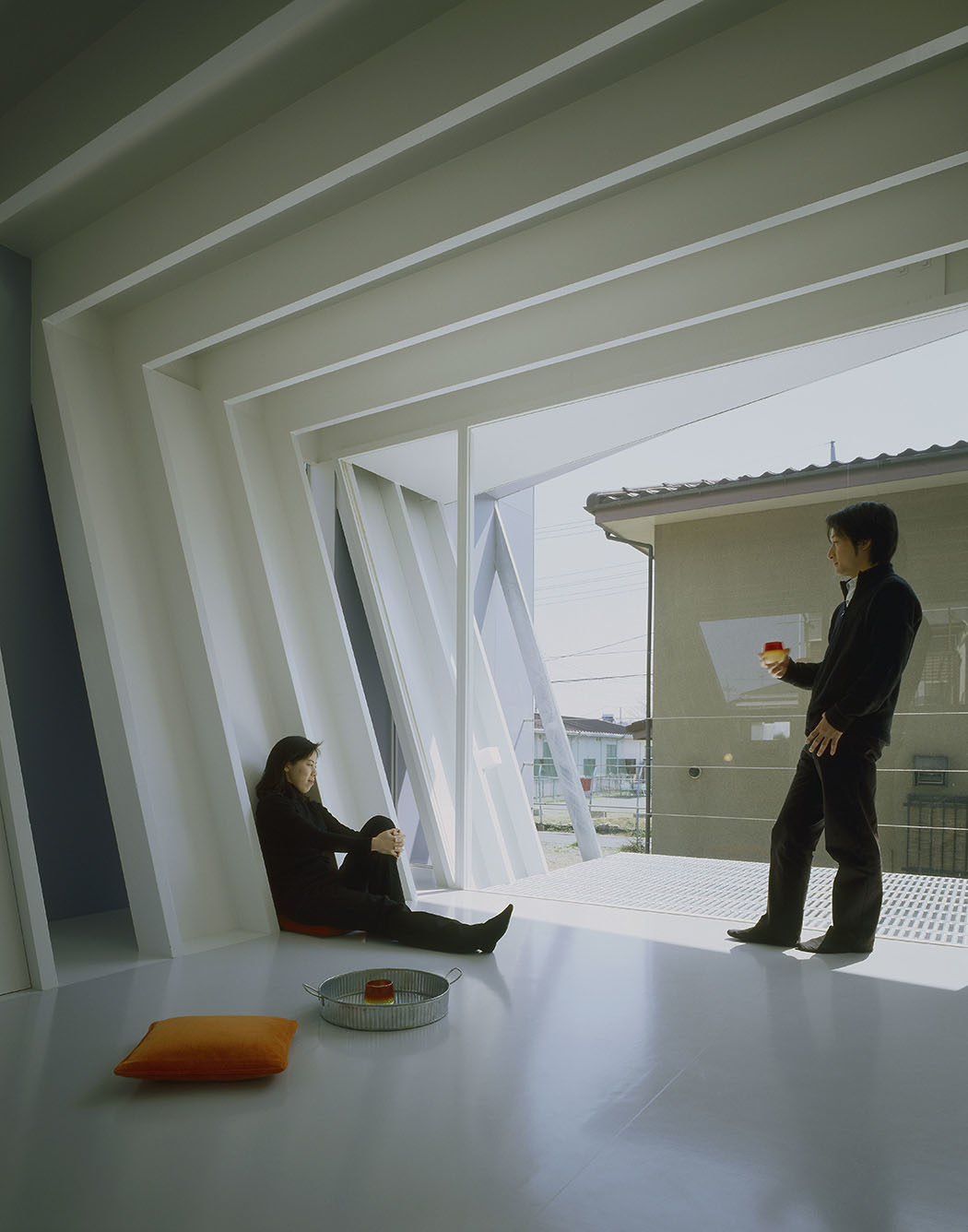
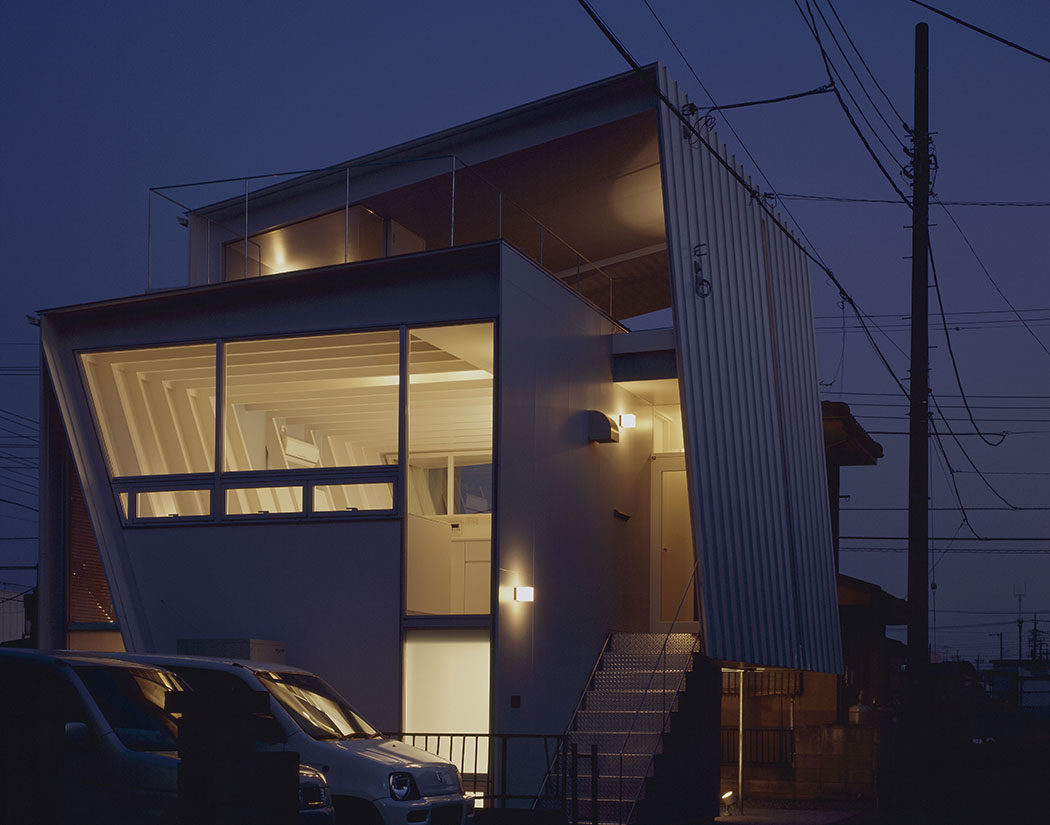
Information
-
Location
Chiba Prefecture
-
Type
Residence
-
Structure
Timber frame, Steel framework, 2 stories
-
Site Area
85.32m²
-
Design Period
January 2003 - August 2003
-
Construction Period
September 2003 - March 2004